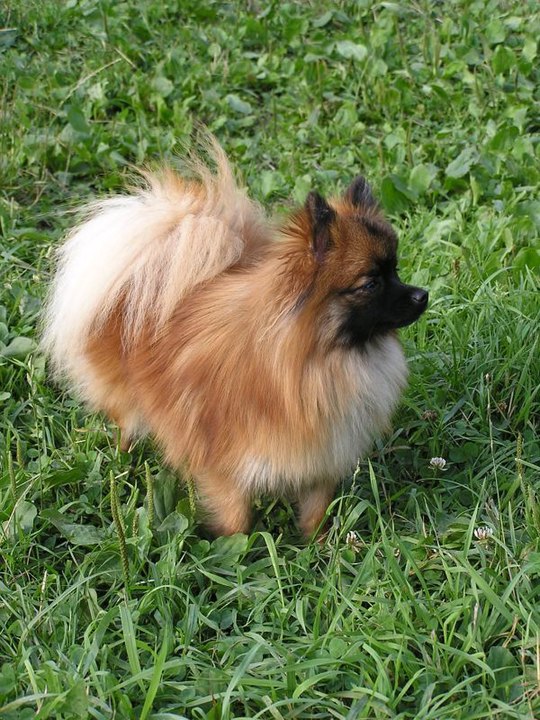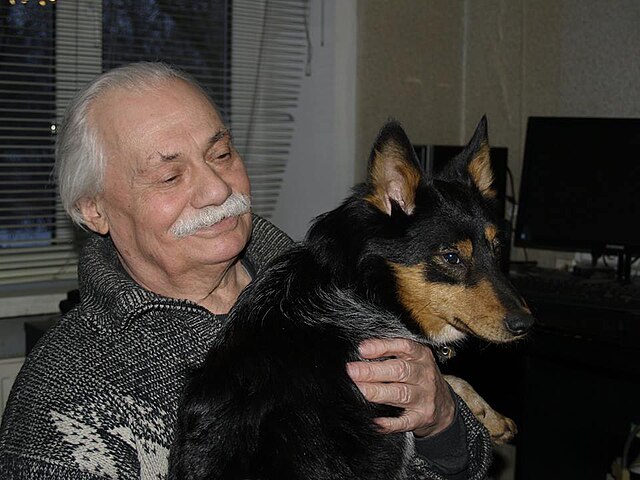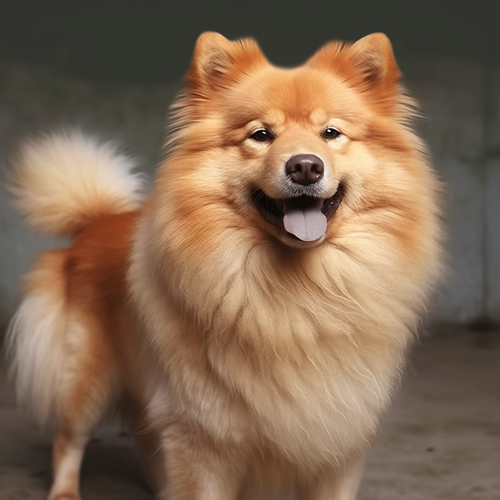The German Spitz is an energetic and alert little breed that is loyal to his owner. Originally bred as a companions and watchdog, there are between 2-5 sizes of the breed (depending upon which kennel club one is referring to). According to the FCI, the Pomeranian and Keeshond are two members of the German Spitz “family”, although other kennel clubs consider these breeds separate. The American Eskimo Dog is sometimes considered to be a German Spitz as well, depending upon who you talk to. Here in America, all of these breeds are separate, or at least the current bloodlines are distinct from each other.
Despite his small size, the German Spitz is surprisingly sturdy and doesn’t seem to mind increment inclement weather as much as other dogs his size. He also tends to be fairly healthy and long-lived as long as his owners give him what he needs to stay fit. Eye problems and patella luxation are the most common maladies of the breed, although it is in the minority of members. Naturally distrustful of strangers, this breed makes a great watchdog. He does need socialization from early on in order to get along happily with new people.
German Spitz are easy to train for most owners as they are very intelligent. That said, they can be somewhat independent and if bored, may choose to “forget” what was taught. Don’t fall for their games! Use plenty of praise and encouragement but make sure to enforce commands that they already know and are refusing to do. Take note, these little spitz dogs can be a yappy breed and may need training to curtail their vocal nature. They are also prone to loudness (not to mention destructiveness) when they aren’t given enough to do. Therefore training will help these vocal dogs in two ways – by providing a necessary mental job as well as teaching them how to quiet on command. 
While he doesn’t require extensive grooming, the German Spitz does need regular brushing a few times a week. This coat will shed about twice a year, during which time dog hair will be everywhere – quite a feat for a small dog! When not in shedding season, the shedding isn’t very bad. Bathing need only be done when he needs it, and the coat should never be shaved as this will change the texture of the hair as well as remove the insulating properties. Double coats protect against the heat as well as the cold, and this is accomplished as long as the dog is regularly brushed out. Yes, they do tend to do better in colder weather but a brushed out (to the skin) German Spitz will be much more comfortable in the heat than one that has been shaved.
The German Spitz is a medium energy dog that requires a medium amount of exercise. Luckily his small size means that a shorter walk will go a longer way toward fulfilling his exercise quota! He also loves to run and explore in fenced areas – just make sure the fence is secure as his curious nature means he may squish through small openings or holes. Mostly, this little spitz just enjoys going out and having adventures with his person. It helps him satisfy his curiosity as well as providing plenty of social interaction with his owner. These dogs crave time spent with their people and as such, should never live in homes where they spend too much time alone.
The German Spitz can live happily with children however it is vital that the kids can be gentle with dogs. Although sturdy for their size, this is still a smaller breed that nonetheless can get hurt by rough handling. They therefore do best in homes where kids are above toddler age and have been taught how to interact nicely. Other than this they are quite adaptable and they can work out in all types of home or apartment settings. Many live with other dogs in the family pack while others live as the sole dog of the household. Either can work, but make sure to socialize him while still a puppy if he is going to be living with another canine. He is more likely to enjoy living with a dog the same size as himself and possessing a gentle demeanor.



